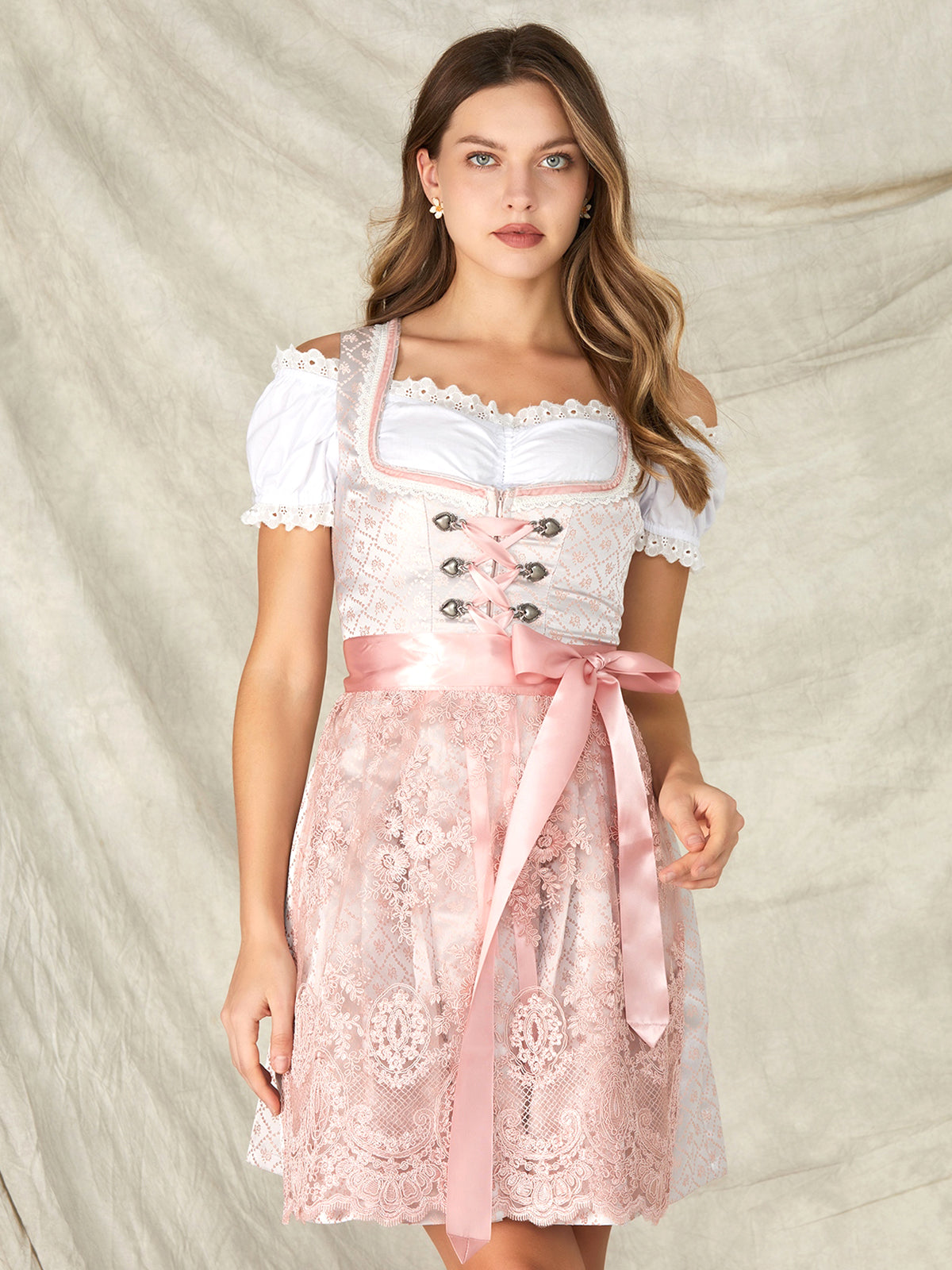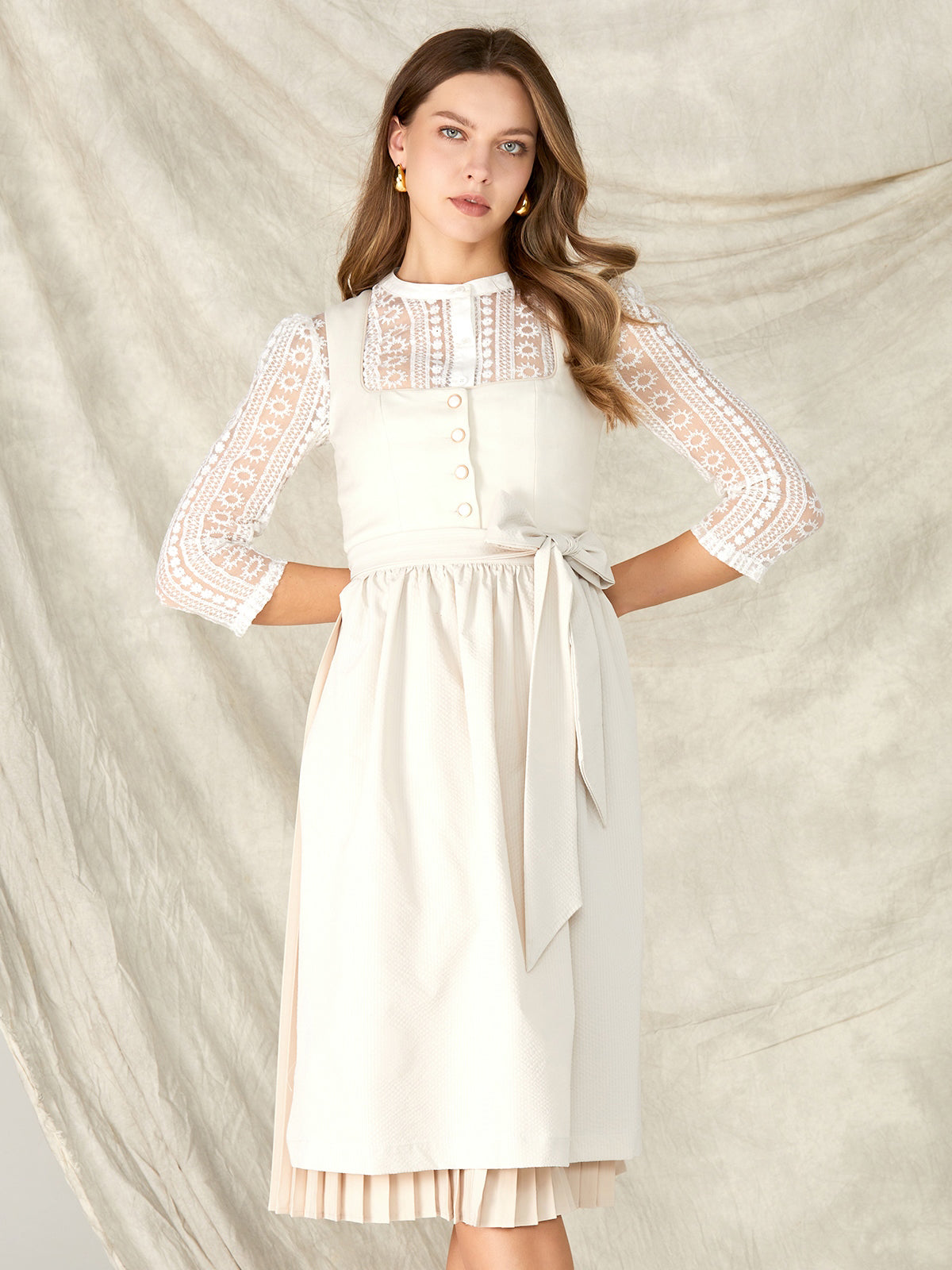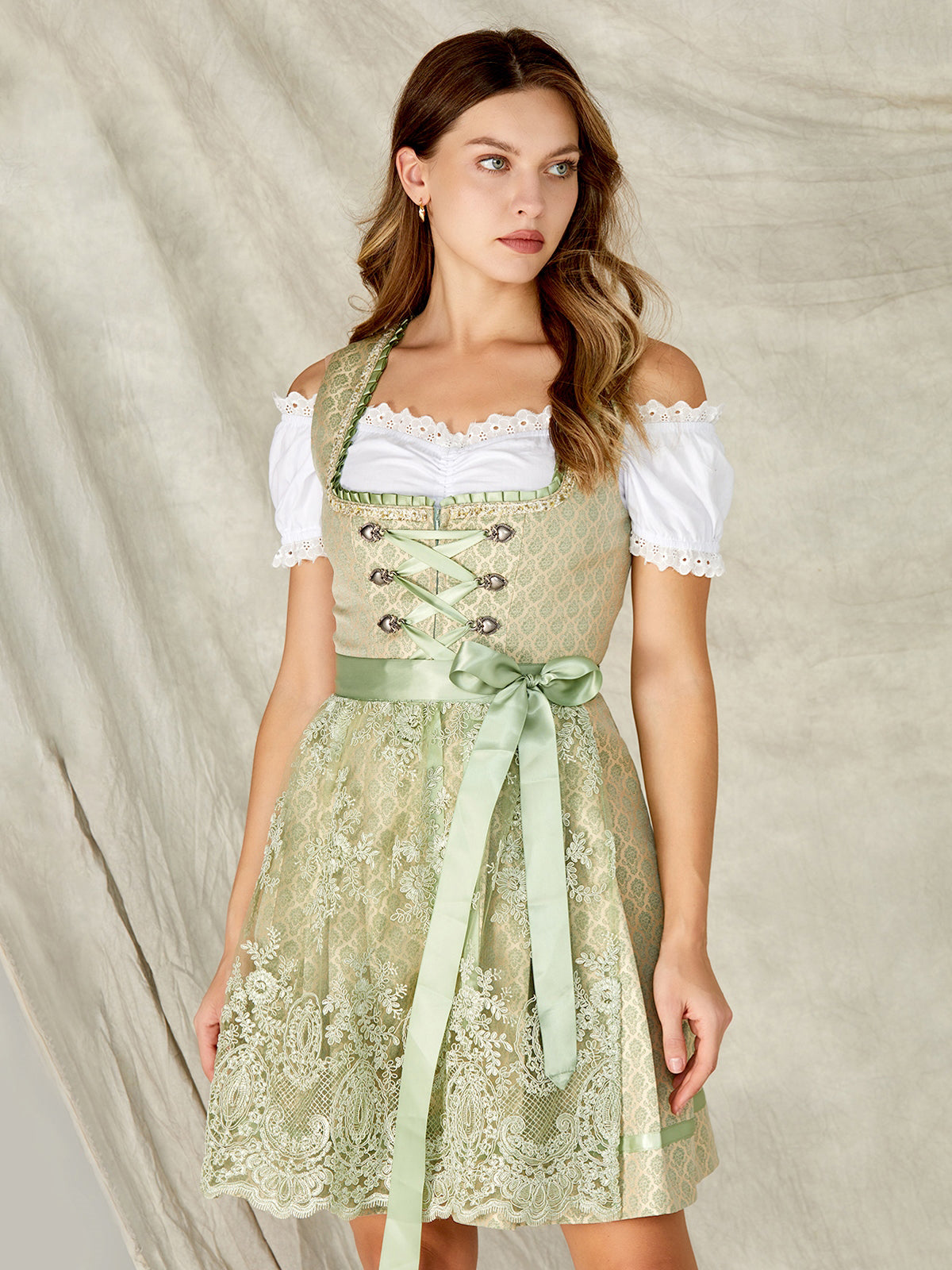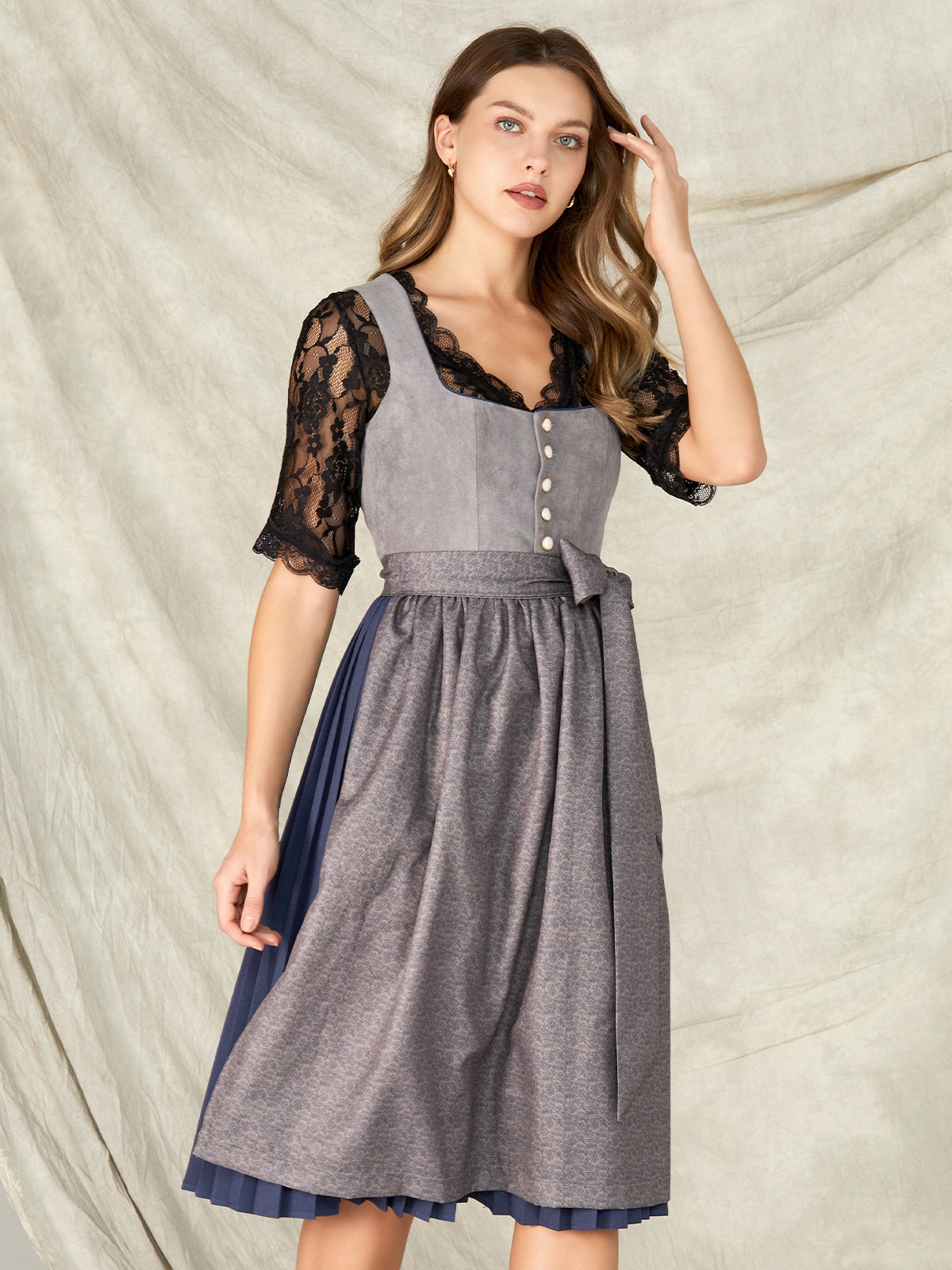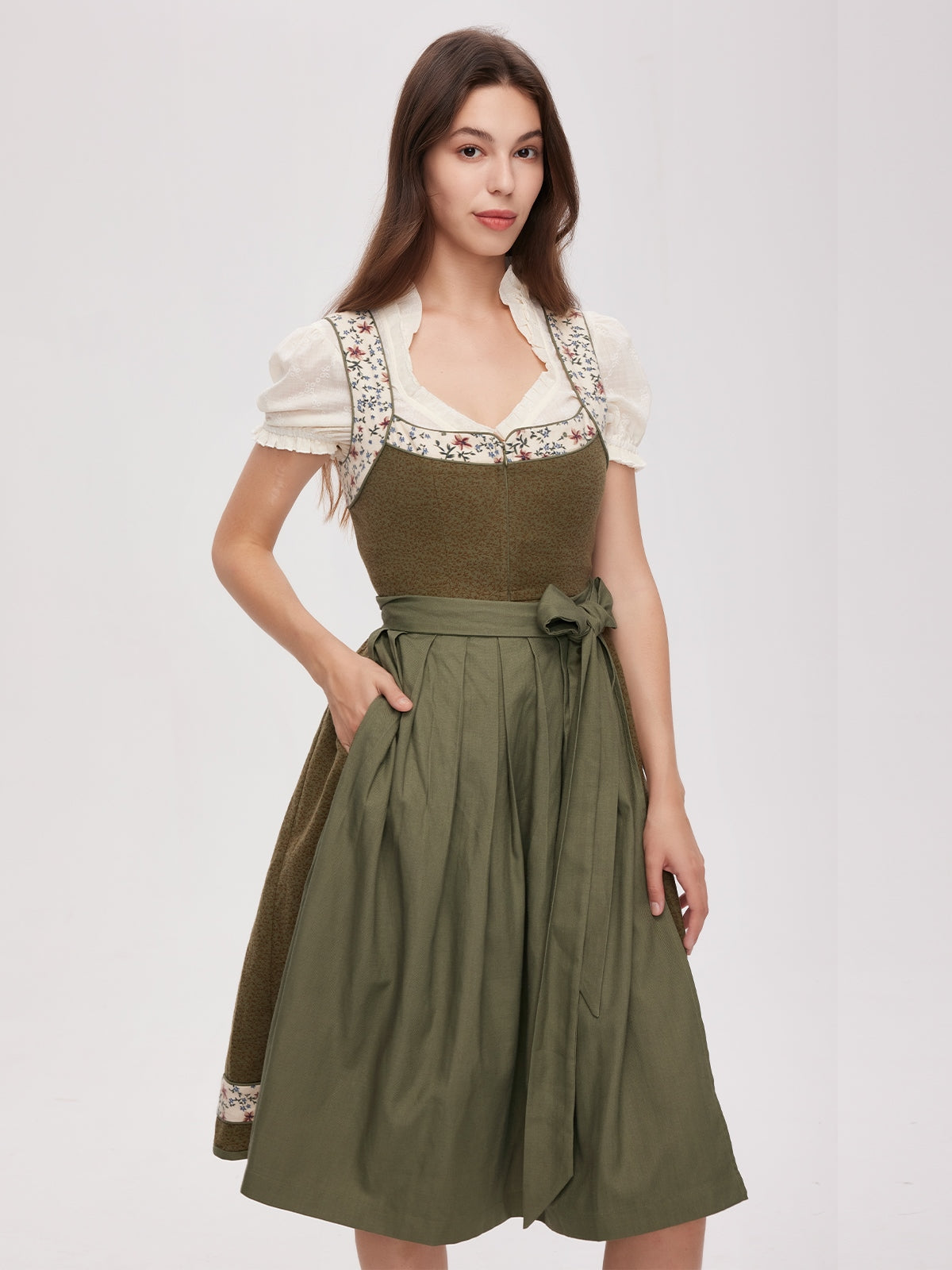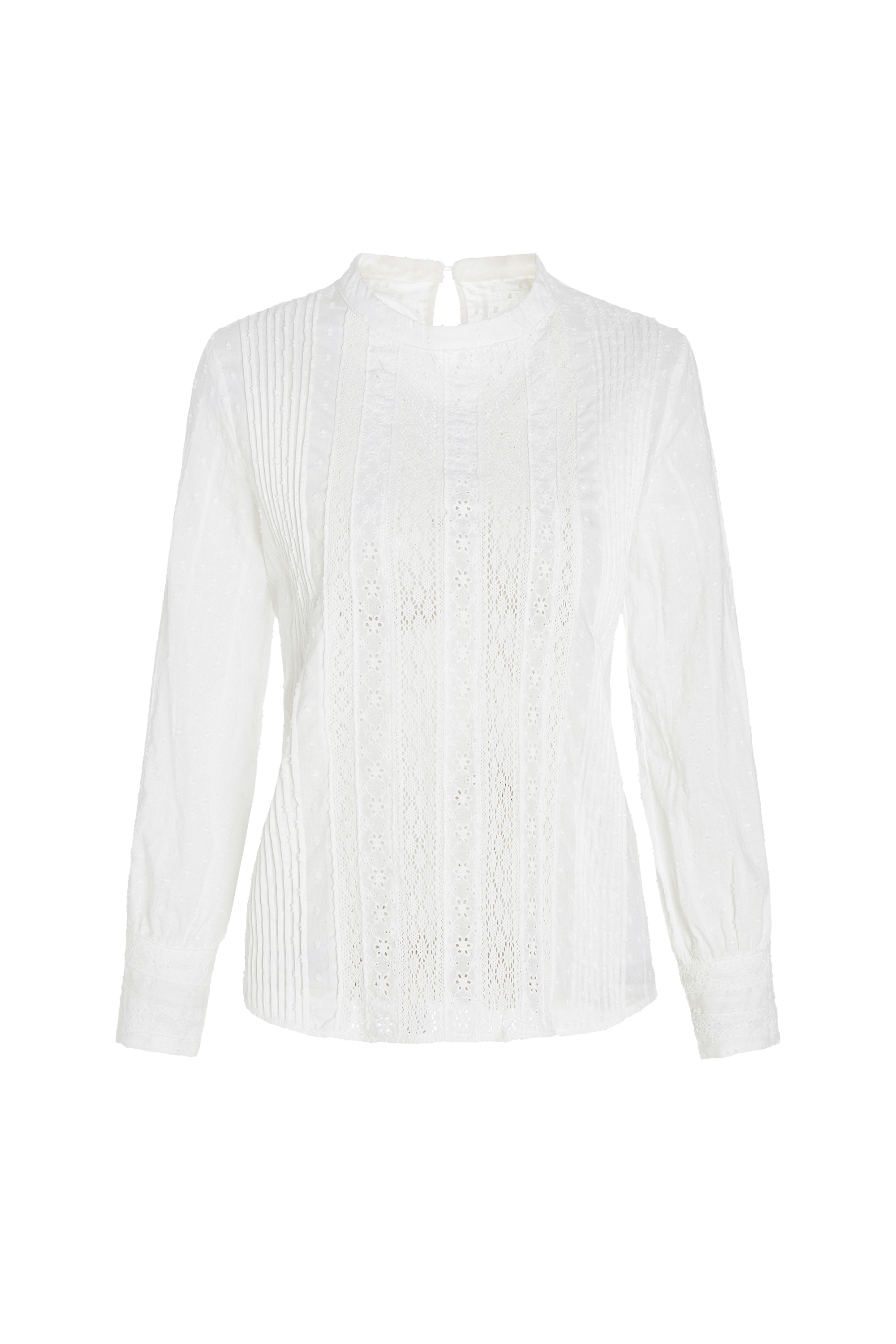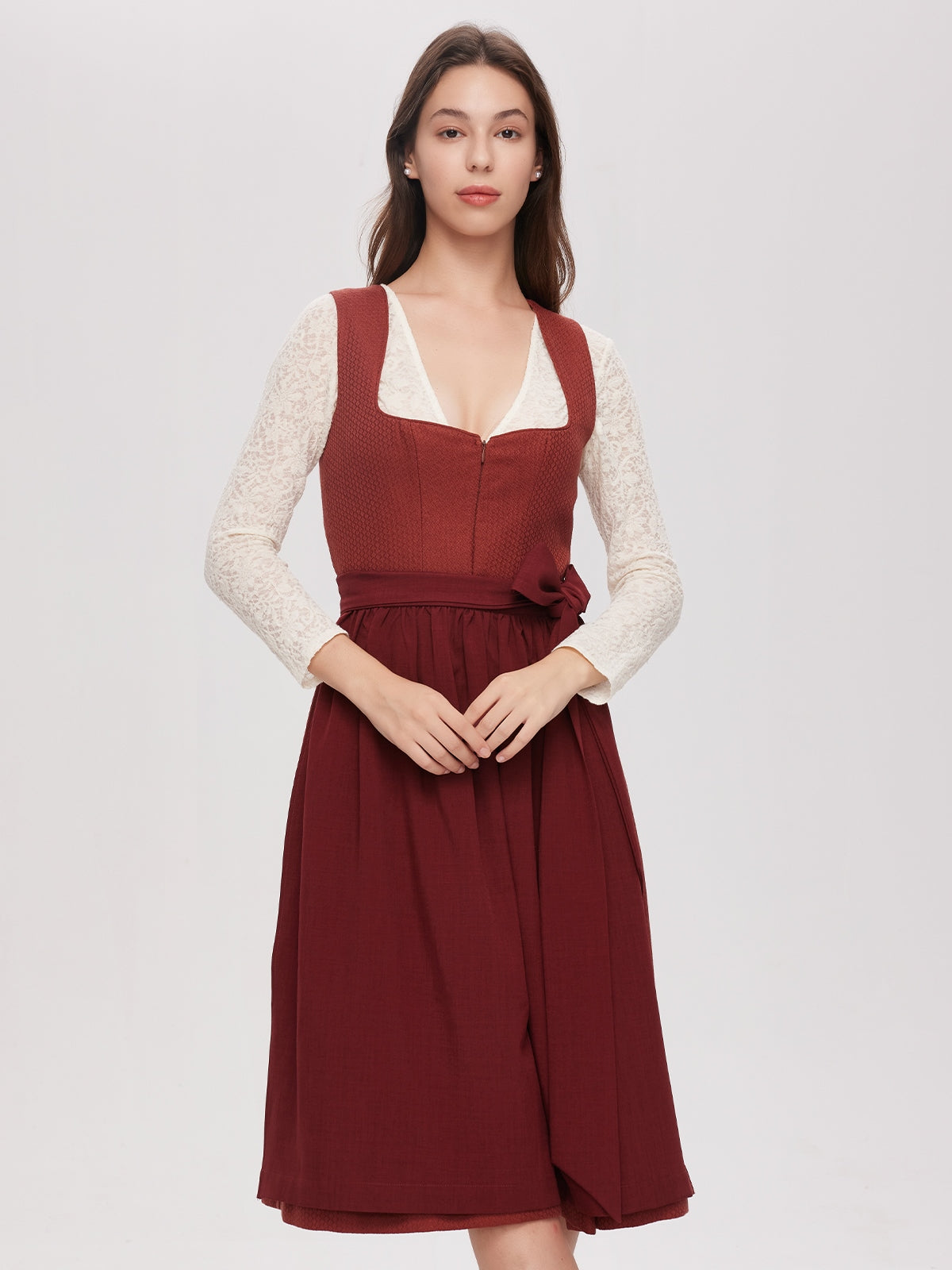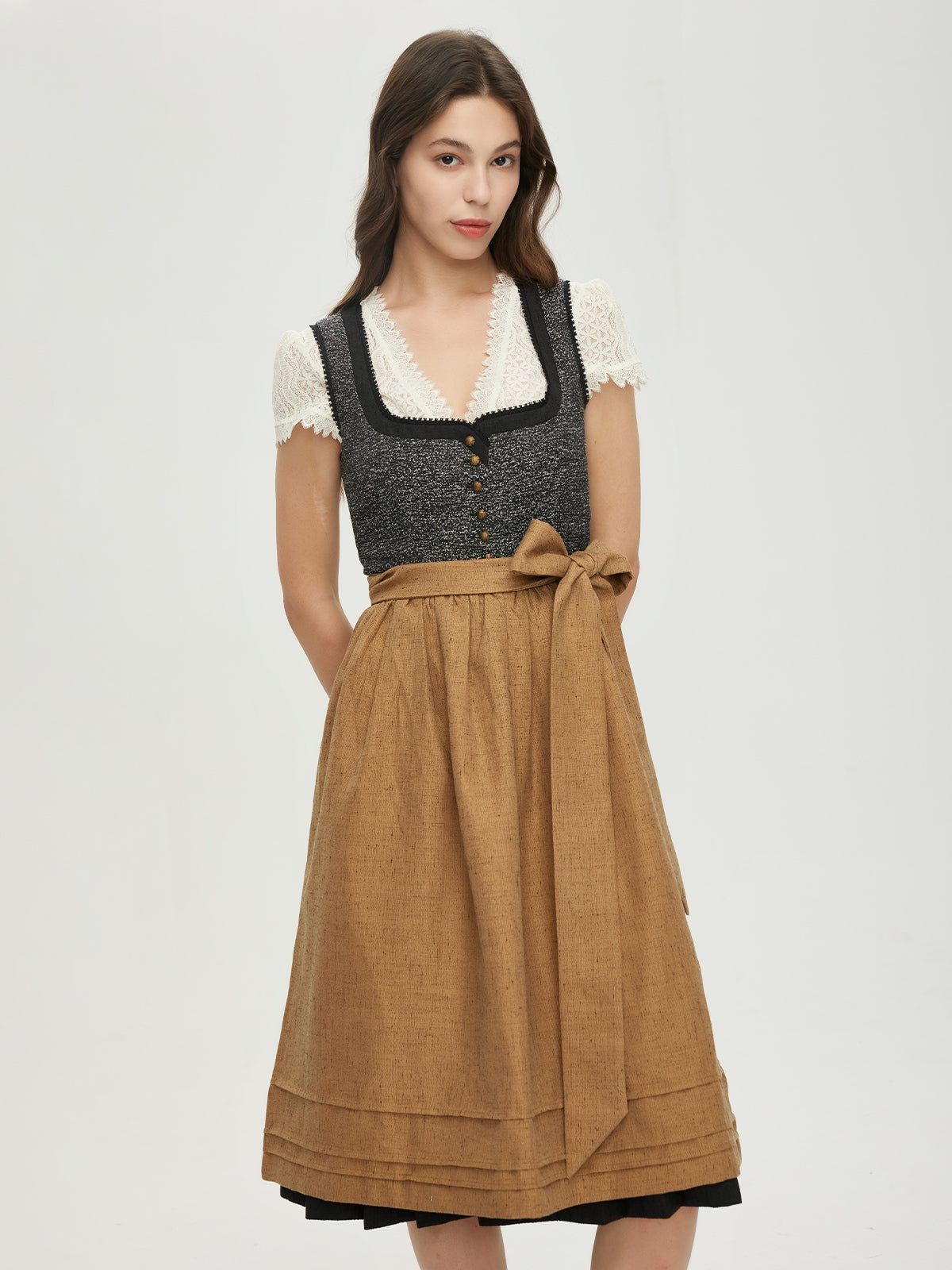1. The world of the Dirndl: From traditional costume to modern everyday wear
The dirndl, the traditional Bavarian dress, is far more than just a historical garment. It is a symbol of identity, culture, and freedom of personal expression. In recent years, the dirndl has evolved from a fixed tradition into a multifaceted fashion icon—and with it, the significance of its colors and cuts.
Colors as the language of the soul
Each dirndl color has its own meaning and effect on the wearer. Red, the traditional color of passion, represents joy and joie de vivre. It is the color that should dominate most to reflect the mood of the celebration. Blue, the symbol of calm and trust, is perfect for the quieter moments of a day spent in the festival tent. Green, the color of nature, conveys a freshness that doesn't fade even on the hottest summer day.
2. Zipper as innovation: comfort meets elegance
In the world of fashion, there are no rules without exceptions—and this also applies to dirndls. Zippered dirndls are not only practical solutions for everyday wear, but also a statement about the new aesthetic of traditional costume. This innovation allows the dirndl to be put on quickly and easily without losing its traditional shape.
Psychology of Fashion: What our clothes reveal about us
Psychologists have discovered that our clothing obsession isn't just about the desire for comfort or beauty, but also about our inner identity. A dirndl with a zipper can not only be practical but also boost the wearer's self-confidence. It's a sign that you don't want to conform to mainstream fashion trends, but rather want to express your own personality.
3. The Color: How Colors Influence Our Emotions
The effect of colors on our mood is a complex topic that transcends the boundaries between fashion and psychology. Red, for example, activates the amygdala in the brain, which is responsible for emotions. This explains why a red dirndl is not only eye-catching but can also evoke a slight arousal—perfect for those boozy moments on the beach.
An abrupt turning point: Trend researcher Dr. Anna Müller
Amidst this color analysis, I'd like to offer a perspective that might not be expected: that of a fashion researcher. Dr. Anna Müller, an expert in traditional costume and psychology, says: "The color choice of the dirndl is not only a cultural statement, but also a psychological experiment. Each shade tells a story about the wearer—and this story should be authentic."
4. The Reality of Wearing: From Theory to Practice
Not all colors are suitable for every situation. A low-cut red dirndl may be a real eye-catcher on one person, but it could look over the top in a cozy pub. This is where the art of mixing comes into play: Combine the extreme neckline with a classic color like purple or lilac to create a balance between attention and elegance.
Dirndl Sale: Where and how to shop cheaply
There's good news for anyone ready to embark on the search for a custom dirndl: The opportunities for dirndl sales and online shopping are steadily growing. Many designers now also offer custom-made options, allowing the neckline and color to be perfectly tailored to the wearer's body.
5. The future of the dirndl: tradition meets avant-garde
The future of the dirndl lies in its diversity. While some continue to return to classic patterns, others experiment with neon-colored fabrics or futuristic cuts. This development reflects the fact that fashion is not only a mirror of culture, but also a mirror of our inner desires and fears.
Invitation to self-reflection
Before you choose a particular dirndl , ask yourself: "Which color best expresses me? Which cut reflects my soul?" The answer could help you not only find the perfect dirndl but also develop a deeper understanding of your own identity.
Short circuit: More than just a piece of clothing
The dirndl is more than just a piece of clothing—it's a living work of art that connects culture, psychology, and fashion. With a zipper and a conscious choice of color, you can not only create a unique figure but also convey a message about your values and beliefs.

